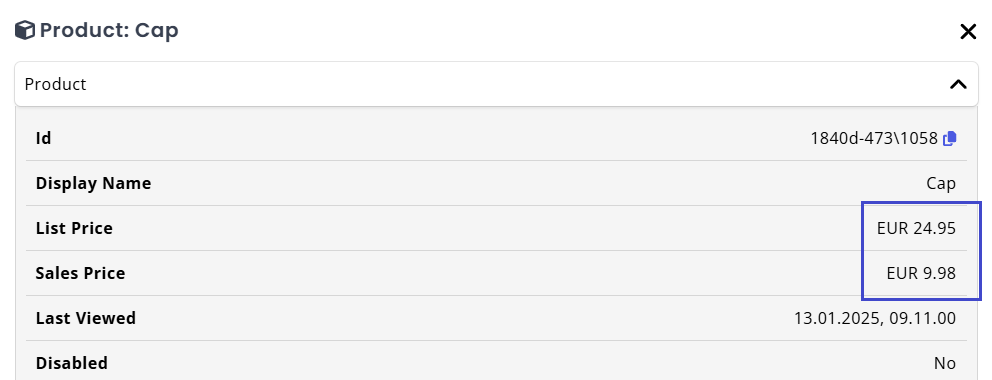Appearance
FAQ - Product Data
This page contains questions regarding the product data used by Relewise in executing and perfecting search and recommendations. If your question is not found below, please reach out to us via email or Slack.
Do Variant IDs need to be unique?
Variant IDs only need to be unique across their associated product. Since each variant product is explicitly tied to a main product, the variant number is only checked in reference to this primary product ID. This means that you can have variants with the same ID associated with different products, without causing problems for Relewise Search and Recommendations.
Example of Variant IDs across Products
Product A with ProductID = "p1121" has Variants with VariantID = "v12", "v13", "v14".
Product B with ProductID = "p1705" has Variants with VariantID = "v12", "v13", "v14".
These will not conflict, since the engine looks at the ProductID first, and the VariantID second.
What is the difference between Specifications and Data on Variants?
Specifications refer to a series of key-value data sets that specify the dimensions of a variant product. This could be, for instance, a specification of color with the values red, black, and green.
Variant Data refers to any kind of data key you might want to use to do one or more of the following: Store, retrieve as part of a response, search within (indexed), filter by, merchandise based on etc.
Variants themselves refer to the unique combination of specifications that make up a particular product. So a T-shirt that has the specifications color and size, might be the variant size=small, color=black.
Providing specifications allows Relewise to try and match variants of one product to the variants of another in recommendation scenarios.
Read more about Variants here.
My products are showing incorrect prices on my website / in my email recommendations
It is likely that your prices have yet to be synchronized to Relewise. When your products are showing incorrect prices in a search or recommendation result, check the product(s) in your MyRelewise, under Entities -> Products. This is the price being used by Relewise, and if it does not reflect the changes you have made in your ERP/PIM, it means that the data has yet to be synchronized to your dataset.

Depending on how your data is being intergrated, it may be a matter of the feed job needing time to run again; typically, a job runs every hour.
For data related to email campaigns, the job to synchronize data typically runs every 6-8 hours.
If you push data via the API, you may have to check with your internal IT to know when the data will be synchronized.
I updated my products, and now one or more of them have changed from disabled to enabled. What happened?
Using the UpdateKind ClearAndReplace will reset your products to enabled by default. Normally you would use ProductAdministrativeAction to enable or disable a product, as per the implementation steps. However, the ClearAndReplace UpdateKind of a ProductUpdate request will treat the product as if it was freshly imported into Relewise, which means that it will default to an Enabled state.
ClearAndReplace does not affect the product ID, and products updated this way will retain their associated tracking data.
What is the best way to separate markets that use the same currency but differ in sales price?
Use currency prefixes. Currencies can have any format you desire in Relewise; this means that you can use prefixes to differentiate between markets that use the same currency but where the prices might be different. For instance, the Euro can be sorted into German Euro and Italian Euro by naming them de-eur and it-eur respectively.
How should I format my language keys?
The Relewise Search Index maps to the ISO 639-1 standard, eg. en for English or de for German. It is however possible to use any language code that you desire; doing so just requires you to map your custom language(s) to the ISO standard. This can be done via the MyRelewise Search Index. Relewise automatically converts language and currency keys to lowercase when encoding the data.
What is the Custom Dictionary for Variants, and what do I use it for?
The Custom Dictionary is intended for internal use only. For any kind of custom data that you need to append to an entity, you can use the Data Dictionary and one of the many different data types that Relewise supports.
